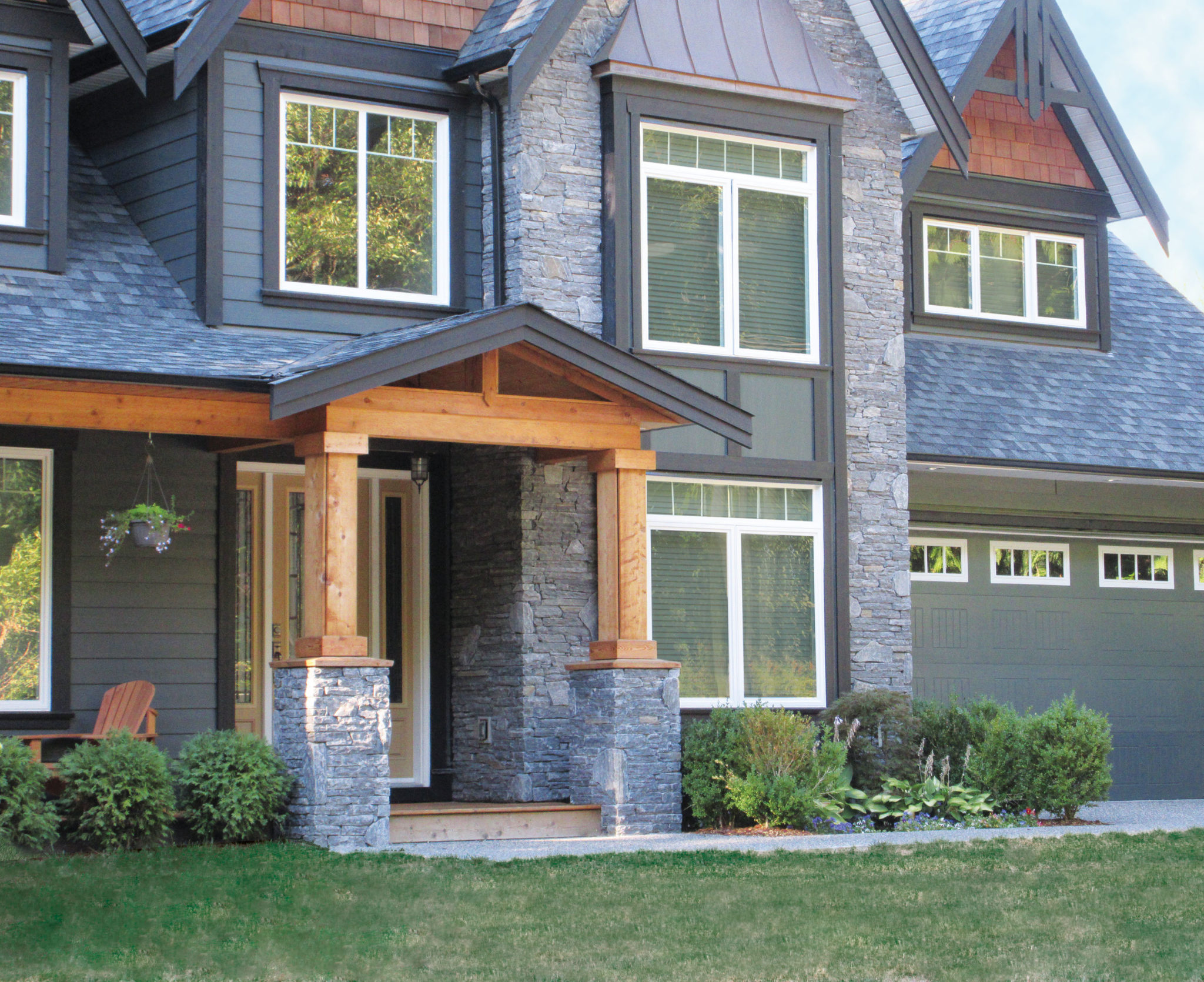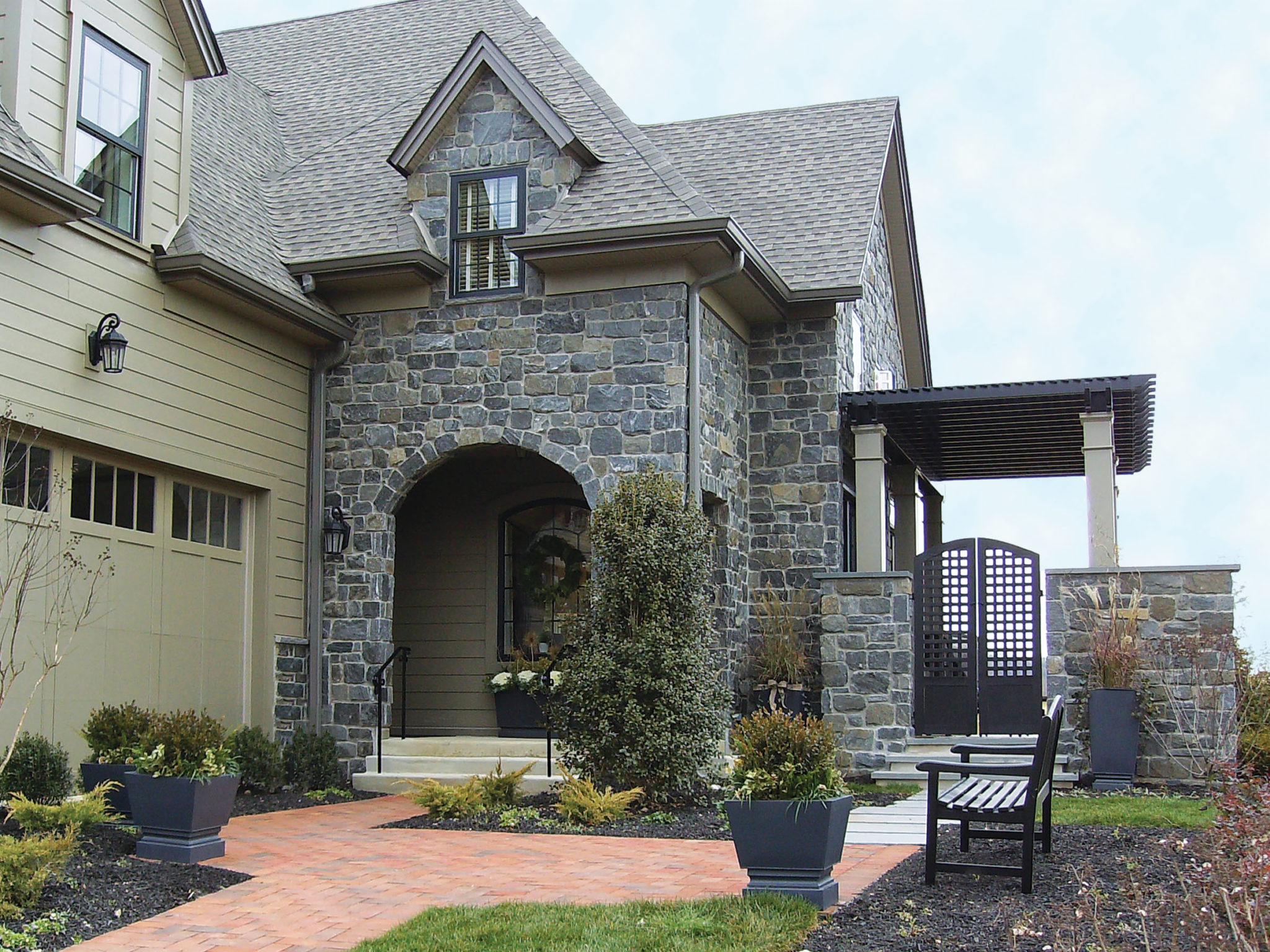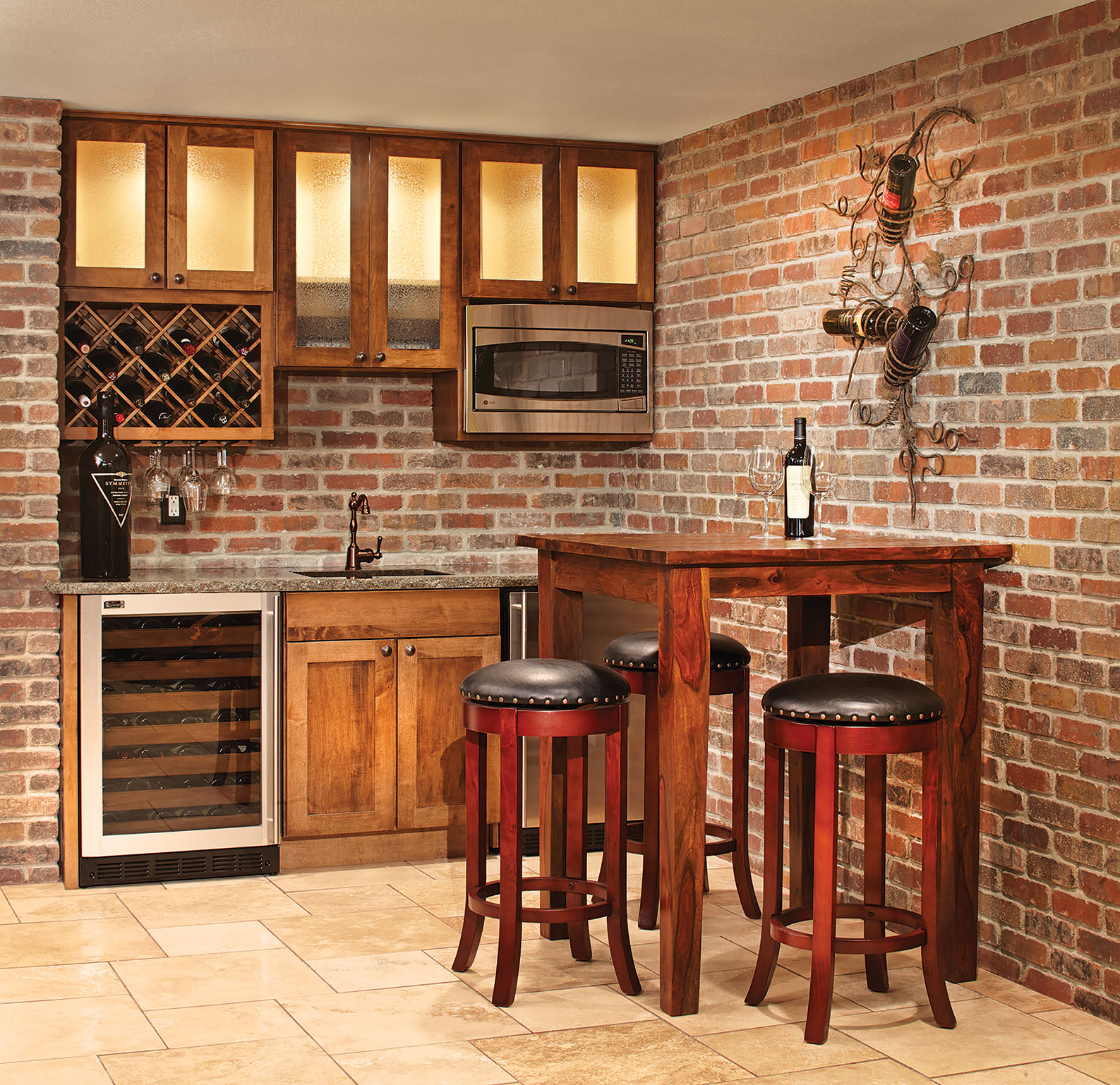Durable Alternatives to Clapboard

Earth tones rule when Rocky Mountain ledgestone and fieldstone combine with clapboard siding and shingles. | Photo courtesy of New Jersey Gravel & Sand Co.
Masonry makes a durable companion for clapboard siding
 Jeff Woehr
Jeff Woehr
Building Stone Manager
New Jersey Gravel & Sand Co.
1661 Route 34 South Wall, NJ 07719
732-938-5252 | NJGravelSand.com
The Carefree House, which examines durable home products in every issue, takes a look at stone and brick siding with Jeff Woehr of New Jersey Gravel & Sand Co.
Design NJ: Why would homeowners choose brick and stone as opposed to clapboard siding?
Jeff Woehr: Brick or stone siding probably works best as a complement to clapboard. The masonry breaks up a big expanse of clapboard for a timeless look evocative of past building techniques that are classic. I don’t see many houses that are all stone or brick anymore. It might be a matter of geography. If you go to North Carolina, which is the center of brick production, you see more homes that are all brick. In Pennsylvania, you’ll see some homes that are all stone.
DNJ: What stone and brick design choices are preferred?
WOEHR: I find that New Jersey homeowners often don’t like stone from the Western U.S. or the Midwest. They like a regional stone—say, from Pennsylvania. They are used to seeing it and are attracted to it for that reason. If the stone is from China, it needs to look like the stone from Pennsylvania for people to like it. Ninety percent of the selection is based on intuition. Fieldstone from Pennsylvania and Tennessee is a universal choice. It’s been weathered by time. Granite from New England is popular by the shore, especially for homes with Cape Cod and Shingle-style architecture. In brick, New Jersey homeowners tend to like colonial-looking styles, and today’s popular choices are manufactured to look 100 to 200 years old. The brick is usually red, sometimes with a whitewash or pinky reds or charcoal mixed into the coloring.

Grays mix it up in Sherwood™ natural-stone veneer from Rolling Rock Building Stone. | Photo courtesy of Rolling Rock Building Stone.
DNJ: Is there a lifespan for stone and brick siding?
WOEHR: Natural stone is very long-lasting. With thin natural-stone veneer, the lifespan is likely to extend more than a century because, in many cases, we are using thinner versions of the same stones that are still viable on houses built as far back as the 17th and 18th centuries. There are viable natural-stone veneer installations on houses dating to at least the 1960s in the South and on the West Coast. In the Northeast, I am aware of installations going back to the early 1980s. My best guess is that the installation lifespan would be the same as traditional stucco. In this area, there are 100-year-old houses that still have the original stucco. Brick veneer used in the past 10 to 20 years was 4 to 6 inches thick and could last 300 years. There are Revolutionary War-era brick houses here that are still fine. With the 1½-inch veneers that are popular now, I believe the lifespan will be similar to full brick, but it may be too young of a product to know for sure. Can we get 30 years plus out of it? Yes. But 100 years or more? That may not be knowable at this point.
DNJ: What maintenance is required with brick and stone siding?
WOEHR: The cement [mortar] joints between the stone and brick will need to be maintained about every 25 years. This consists of repointing the mortar, which means refilling any voids in the joints, if it has worn away or cracked, to keep water out. If the stone or brick is heavily shaded, then mold, mildew or algae can develop on the surface. It can be cleaned with pressure-washing, but be careful. If the pressure is too strong, it can knock out the mortar joints. You can use a product to help loosen the mold, mildew and algae. The manufacturer or a stone yard can tell you what products are best. Some options I like are made by Miracle Sealants Co., Laticrete’s Stonetech® line and Prosoco®. When you’re cleaning fieldstone from Pennsylvania, it’s got lichens on it and that’s part of the appeal. If you clean it too aggressively, you will ruin the effect. When the stone or brick is in full sun, it’s unlikely you will ever need to pressure-wash it.
DNJ: What can harm brick and stone siding?
WOEHR: Water and ice. The expansion of freezing water causes cracking, usually in the mortar, which is the weakest point, but the expansion can sometimes crack stone also. Stone that hasn’t experienced freeze-thaw cycles is most susceptible to this damage—for example, sandstone from Arizona, certain limestone from Texas and some overseas stone. Another problem can occur during installation. If the installer cleans up the excess mortar with acid, it must be done carefully. Otherwise the acid can change the color of the stone and damage the mortar.

General Shale’s Old Brick Originals™ line is no more than 1 1/4 inches thick but looks just like standard brick after installation. Shown is Peppermill. | Photo courtesy of General Shale
DNJ: Designers sometimes paint brick during exterior home makeovers. Are there any concerns associated with this practice?
WOEHR: Once you paint the face of the brick, there’s nowhere for the moisture to go. If water gets behind the brick and gets trapped there, it can damage the brick and rot the plywood sheathing underneath. You’ve got to make sure water can’t get behind it.
DNJ: Is correct installation key to durability with brick and stone?
WOEHR: Masonry applied properly won’t let water in behind it, so it’s critical the work is done properly, especially when you’re sticking thin veneers on walls. With these, it’s best to use a mortar designed to adhere stone or brick veneer to the wall rather than traditional cement mixes. Those can be fine, but there’s less chance of user error with the special mixes. It takes the guesswork out of proper mixing. New Jersey Gravel & Sand uses Laticrete. We have a lot of confidence in it. Also, you want to put up the stone or brick so it looks good, with narrow joints. A skilled stonemason won’t have wide gaps filled with mortar. If you’re building or remodeling and you get two bids around $45,000 or $50,000 and one for $25,000, that low bidder is probably not doing something right. If you go with it, you probably haven’t saved $25,000; you’ve wasted $25,000.
Mary Vinnedge, Design NJ’s first editor in chief, works as a freelance writer and editor. She makes her home in Texas.
